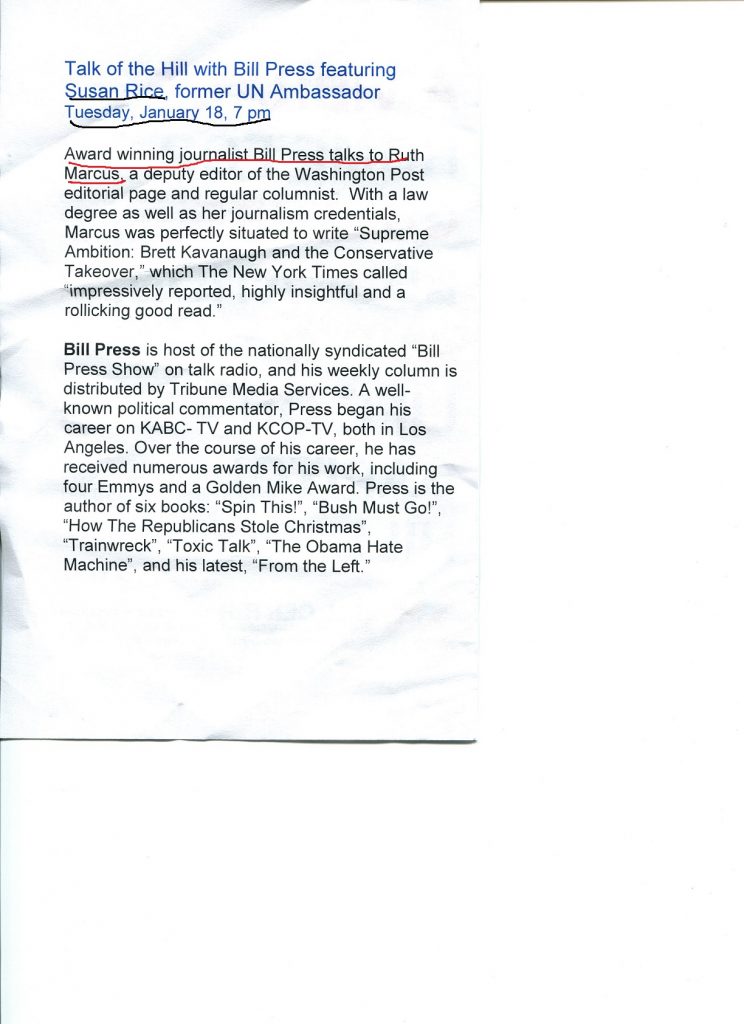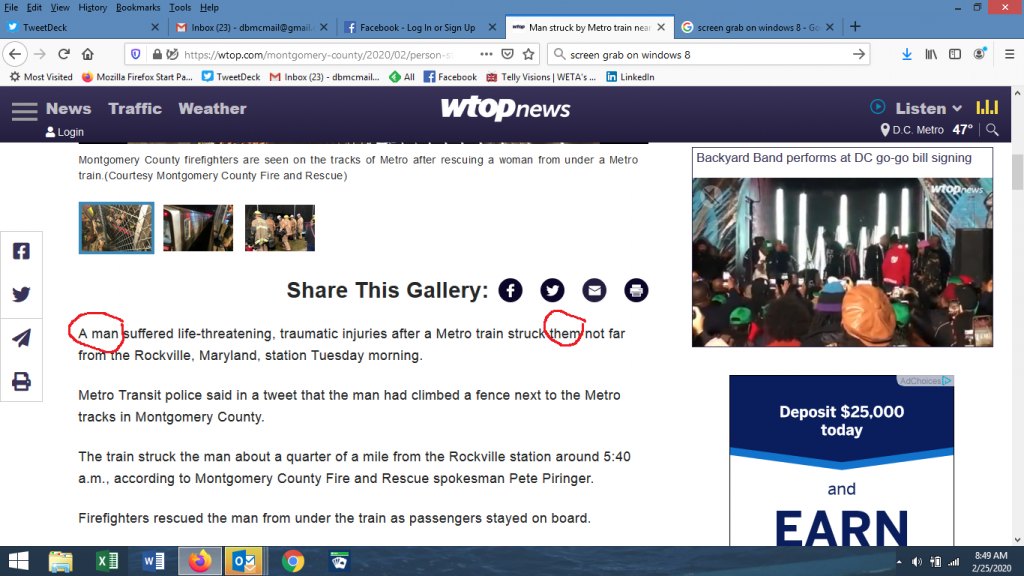Unforced copy errors are errors (i.e., typos, misspellings, grammatical flubs, etc.) that would have been caught if either you gave yourself enough time to take a second (and third) look at what you were doing; or you had someone else check your copy.
Many people don’t notice or even care about copy errors. But if you are like me, errors just jump out at you, no matter where they are—on the TV chyron, on a menu, in the newspaper, in a book.
Errors can reflect poorly on you and your organization. Errors in printed or published copy show that you either didn’t care enough or didn’t know enough to notice. When you are producing marketing materials or anything that will have a longer shelf life than a social media post, errors will last and you must be careful to eliminate them.
Following are four examples I found in the past ten days:
Program flyer
Error: Headline does not match with body of flyer. Whoever produced this flyer, copied the previous flyer from the January program, put in the description of the February program featuring journalist Ruth Marcus, not Ambassador Susan Rice, and then neglected to update the headline.
News site
Error: A man is not “them.” If you know the gender of the person, there is nothing wrong with using the right pronoun, in this case, “him.” It seems that this story was updated when it became known that the victim was male, but the writer did not bother to read the rest of the sentence.
Email invitation
Error: This email is an invitation to a program taking place in March, yet calls it the April program. The organization sent out a corrected email a few minutes later. I would bet speed was the main culprit here. Instead of making this task take less time, the speediness ended up taking more time and effort to correct. Is this a fatal mistake? Not nearly, but it is increasingly common to get emails listing the wrong dates, locations, days of the week, etc.
Words that sound the same don’t mean the same…
Error: The owner of this Twitter profile used “principle” instead of “principal.” This person wrote the description years ago when first setting up the Twitter account and has never bothered to review it.
Bottom line: All of these errors are small, unforced and most importantly, avoidable. Next time you are writing something that will be public-facing, take a breath, slow down, and hit pause before you publish. Always read over what you wrote (I like to read out loud so I can hear the errors) or ask someone else to take a look. If you made a mistake and it has already been publicized, fix it if possible.
About Deborah Brody
Deborah Brody writes and edits anything related to marketing communications. Most blog posts are written under the influence of caffeine.






